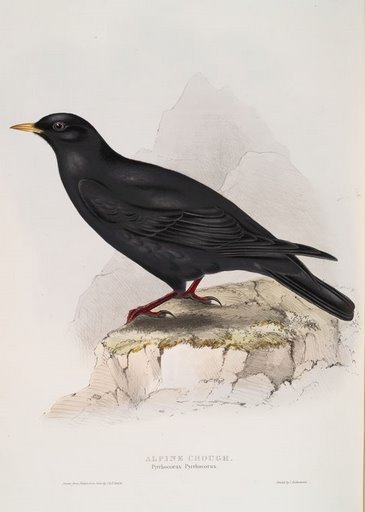|
| Query: water birds | Result: 197th of 1114 | |
Alpine chough, yellow-billed chough (Pyrrhocorax graculus)
| Subject: | Alpine chough, yellow-billed chough (Pyrrhocorax graculus)
| | Poster: | Wiki Photos (---@---.---)
| |

| Resolution: 365x512
File Size: 22793 Bytes
Upload Date: 2023:03:22 09:32:16
|
Alpine Chough - Pyrrhocorax graculus
Date between 1832 and 1837
Source John Gould, The Birds of Europe first edition volume 3, plate 69
Author John Gould (1804-1881), painting by Edward Lear (1812-1888) or Elizabeth Gould (1804-1841).
Source: https://commons.wikimedia.org/wiki/File:Gould_alpine_chough.jpg
The Alpine chough, or yellow-billed chough (Pyrrhocorax graculus) is a bird in the crow family, one of only two species in the genus Pyrrhocorax. The Alpine choughs breed in high mountains from Spain eastwards through southern Europe and North Africa to Central Asia and Nepal, and it may nest at a higher altitude than any other bird. The eggs have adaptations to the thin atmosphere that improve oxygen take-up and reduce water loss. This bird has glossy black plumage, a yellow beak, red legs, and distinctive calls.
Order: Passeriformes
Family: Corvidae
Genus: Pyrrhocorax
Species: Pyrrhocorax graculus (Linnaeus, 1766)
Synonyms
- Corvus graculus Linnaeus, 1766 |
^o^
Animal Pictures Archive for smart phones
^o^
|
|